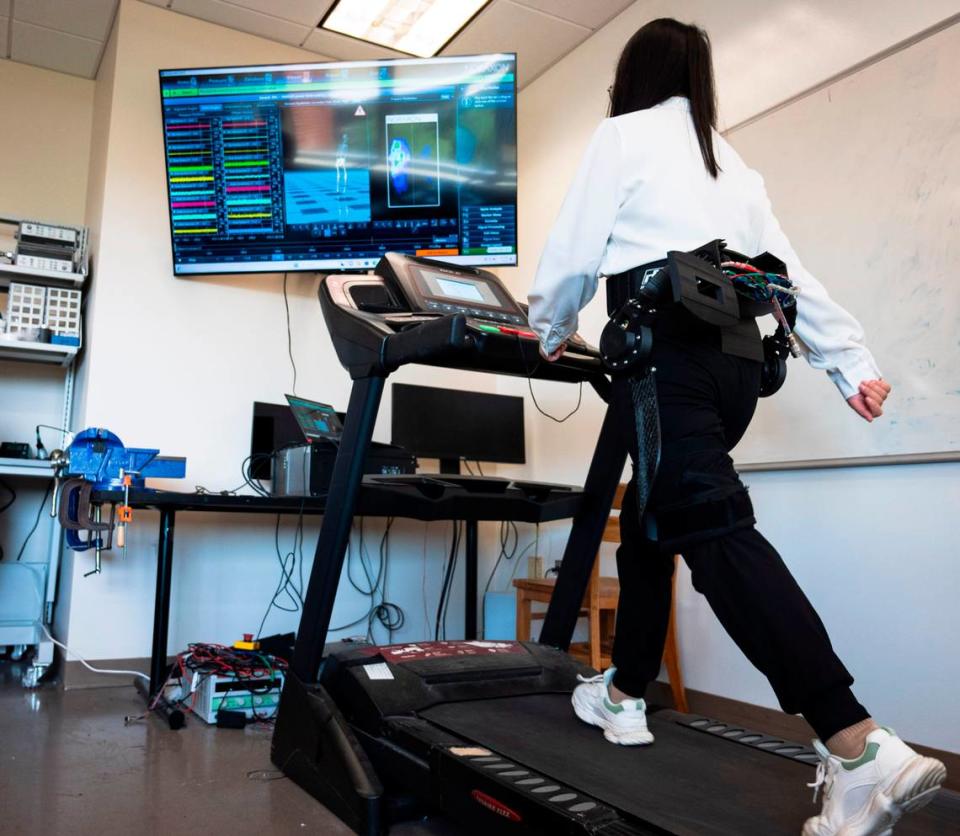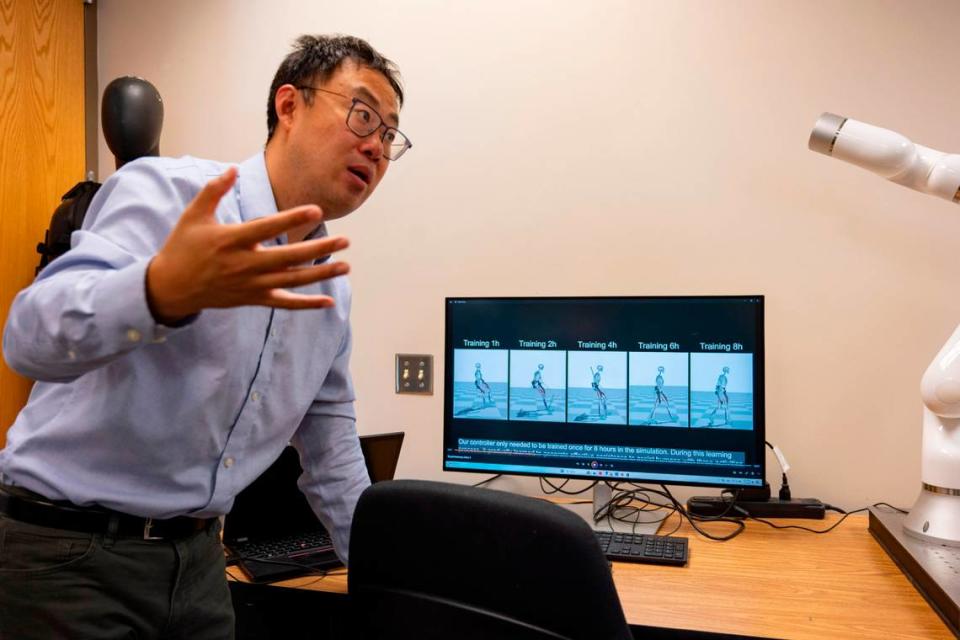NC State researchers develop ready-to-wear exoskeleton to help people walk and run
Strap a fanny pack around the back of your waist, a sensor on the front of each thigh, secure a few buckles and you can be in command of an AI-powered exoskeleton.
What’s that? It’s a type of robot under development at North Carolina State University that is intended to help disabled and non-disabled people move in ways they can’t move on their own.
Members of the Biomechatronics and Intelligent Robotics Lab put their experimental exoskeleton on display this week to share its power and promise.

Within 10 to 20 seconds of suiting up, the person wearing one of these devices is in control. Assessing the angles of your joints, the robot anticipates what direction you are headed and helps you move in that direction. Artificial intelligence allows the robot to interpret these angles and adapt to its surroundings. Move your leg up, and the robot will follow.
At the beginning, it can feel like the device is pulling your leg, said Dr. Ivan Lopez-Sanchez, a postdoctoral fellow at NC State’s Biomechatronics and Intelligent Robotics Lab. But then you realize, “OK, so it’s helping me. Then, you’re synchronized with the robot,” he said.
Traditionally, researchers have leaned on a more lengthy and costly approach where humans work to physically coordinate with exoskeletons on treadmills for an hour before they are used, said Dr. Hao Su, associate professor in the Department of Mechanical and Aerospace Engineering at NC State and one of the authors of a paper on the exoskeleton published in the journal Nature.
The exoskeleton developed by the researchers at NC State learns how to assist human movement all within the realm of a virtual simulation. Su noted that the exoskeleton “only needs to learn in a computer for about eight hours.”
After this training period in the simulation, Su said, “you can immediately have a human walking, running, or stair climbing.”
The exoskeleton is not designed for a specific individual. Already having learned from data on human motion in the eight hour simulation, it can assist anyone without mobility impairments who dons it.

What can the exoskeleton do?
The researchers developed their seven-pound exoskeleton in order to help people, particularly those who are mobility-impaired, run, walk or climb stairs more easily.
Compared to people without the exoskeletons, people using the exoskeletons in the study used less of their own energy to move — 24% less for walking, 13% for running, and 15% for climbing stairs.
The researchers, funded by the National Science Foundation (NSF) and National Institute for Health (NIH), are working to make the exoskeleton helpful to elderly people and children with mobility impairments like cerebral palsy. This next step requires adjusting the hardware to fit these populations comfortably and training the robot on the varying motion patterns of these populations.
They have also developed an exoskeleton for the upper body, and are working with researchers at UNC and Columbia University to test it in people recovering from a stroke or who have amyotrophic lateral sclerosis, commonly known as ALS.
What’s next?
“We actually were working on developing some models, doing some theories and experiments, to try to come up with a device that is a little bit more comfortable and that has a more human centered design,” said Dr. Daniel Rodriguez-Jorge, another postdoctoral fellow in the lab.
According to Su, the materials required to create the exoskeleton at this point cost around $10,000, well below the price of other commercially available exoskeletons. Despite this, Su said, “We want to make this device truly affordable and accessible so more people can use it.”
The researchers say they are already making headway on affordability.
The experiment-free approach highlighted in the paper, Su said, “already significantly reduces the cost for research and development.”
The News & Observer’s Inside Look takes readers behind the scenes to illuminate the people and places in our community.


